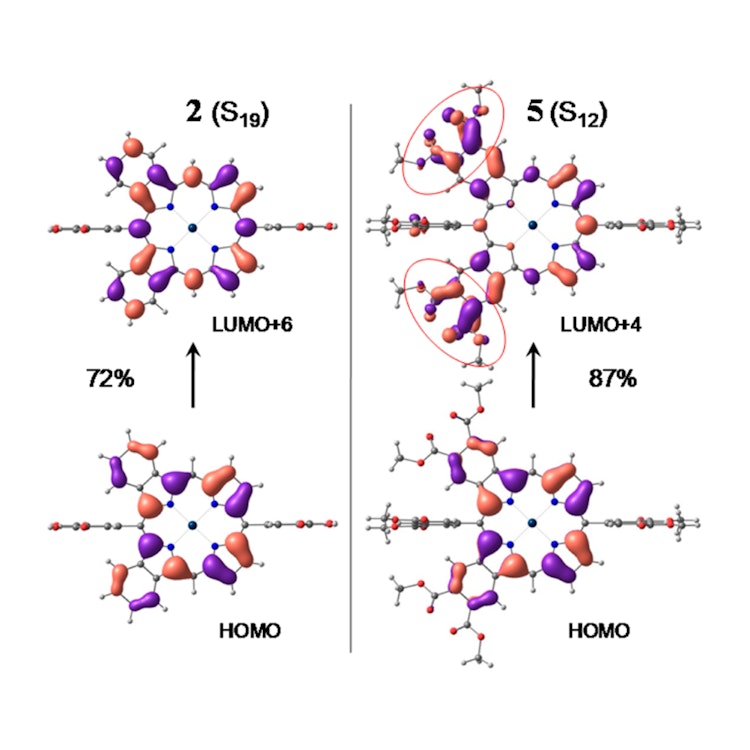
Two-Photon Absorbing Phosphorescent Metalloporphyrins: Effects of π‑Extension and Peripheral Substitution
The ability to form triplet excited states upon twophoton excitation is important for several applications of metalloporphyrins, including two-photon phosphorescence lifetime microscopy (2PLM) and two-photon photodynamic therapy (PDT). Here we analyzed one-photon (1P) and degenerate two-photon (2P) absorption properties of several phosphorescent Pt (II) porphyrins, focusing on the effects of aromatic π-extension and peripheral substitution on triplet emissivity and two-photon absorption (2PA). Our 2PA measurements for the first time made use of direct time-resolved detection of phosphorescence, having the ability to efficiently reject laser background through microsecond time gating. π-Extension of the porphyrin macrocycle by way of syn-fusion with two external aromatic fragments, such as in syn-dibenzo- (DBP) and syndinaphthoporphyrins (DNP), lowers the symmetry of the porphyrin skeleton. As a result, DBPs and DNPs exhibit stronger 2PA into the one-photon-allowed B (Soret) and Q states than fully symmetric (D4h) nonextended porphyrins. However, much more 2P-active states lie above the B state and cannot be accessed due to the interfering linear absorption. Alkoxycarbonyl groups (CO2R) in the benzo-rings dramatically enhance 2PA near the B state level. Time-dependent density functional theory (TDDFT) calculations in combinations with the sum-over-states (SOS) formalism revealed that the enhancement is due to the stabilization of higher-lying 2P-active states, which are dominated by the excitations involving orbitals extending onto the carbonyl groups. Furthermore, calculations predicted even stronger stabilization of the 2P-allowed gerade-states in symmetric Pt octaalkoxycarbonyl-tetrabenzoporphyrins. Experiments confirmed that the 2PA cross-section of PtTBP(CO2Bu)8 near 810 nm reaches above 500 GM in spite of its completely centrosymmetric structure. Combined with exceptionally bright phosphorescence (ϕphos = 0.45), strong 2PA makes Pt(II) complexes of π-extended porphyrins a valuable class of chromophores for 2P applications. Another important advantage of these porphyrinoids is their compact size and easily scalable synthesis.
Download
esipova_2016.pdfResearchers
